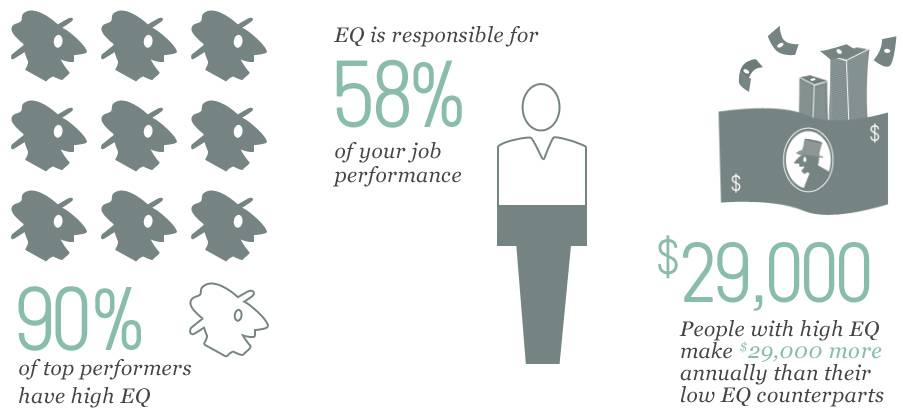Patients don’t trust doctors. A 2013 survey published in the New England Journal of Medicine revealed that 32% of Americans think physicians can’t be trusted. If current healthcare woes are any indication, that number is almost certainly a lot worse four years later.
Yet trust is more important now than ever. Private practices are getting gobbled up at an alarming rate by hospitals and venture capitalists. The businesses that want to stay afloat must offer something over and above the norm. To most patients, that means a doctor they can trust.
Why It’s Hard to Build Patient Trust
Patients today are much less liable to trust doctors than their parents. The speed of information has increased. Social media amounts to a gossip whirlwind where the shocking or indignant stories rise to the top. Online medical sites turn every living soul into an honorary MD.
In that environment, physicians have nearly lost the game before they get started. Doctors are faced with distrusting, suspicious, self-taught clients to whom the phrase, “A little knowledge is a dangerous thing” may hold no meaning.
Today, winning patient trust is about more than just taking a Dale Carnegie course, smiling a lot more, or becoming a body language expert.
Why Patient Trust is Vital

Aside from the obvious reasons to build patient trust (vanishing practices and a skeptical populace), there are a couple close-to-home considerations as well.
First, repeat business. It costs five times more to attract new business than it does to hold onto one repeat customer. Obviously, getting your patients to trust you will go straight to your bottom line.
Next, compliance. The patient who trusts you is more likely to accept your treatment plan. A compliant patient doesn’t waste a doctor’s time by needing a sales pitch with every suggested treatment.
Finally, litigation. When a patient trusts a doctor, he’s less likely to file a lawsuit. That’s from a deeply researched New York Times article from 2015.
For these and other reasons, it’s imperative to the financial life and health of a physician to win patient trust. The real question becomes, how?
How to Build Patient Trust
The tips and examples below for building patient trust form a holistic plan for winning (and deserving) the faith of your clientele.
The plan starts with an innovative way to handle negative reviews, then moves on to the hard work of fixing broken word of mouth, training employees, and handling the challenge of a Google-educated patient base.
Deal with Negative Reviews… Or Don’t
One negative review can stick like glue, skewering patient trust en masse before the relationship begins. Don’t try to fight negative reviews in public or with behind-the-scenes (now defunct) services like Medical Justice. Instead, fight fire with fire by first asking your patients to rate your practice one-on-one, then soliciting online reviews from those who respond with highly favorable marks. A few negative reviews can’t stand up to a flood of good ones.
Word of Mouth is Everything
Word of mouth can make or break a doctor’s patient trust. That goes for old-style talk, social media chatter, and review-site standings alike. You can absolutely manage what your patients say about you, but it isn’t easy. In most cases, a physician will have to take a hard look at her practice and its policies and procedures. Only by thinking about each step in the process from the patient’s point of view can we effectively manage word of mouth.
As the Nielsen graphic below shows, people trust word of mouth far more than any other kind of advertising.
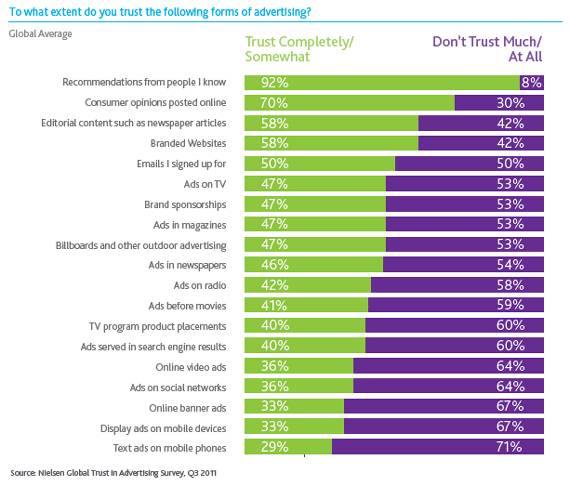
Treat Patients with Respect
This one seems like a no-brainer. Of course you’re not going to insult your patient’s tie or call him fat, but that’s not what we’re talking about with building patient trust. To get that all-important word of mouth, physicians have to do the hard work of being honest about what patients must endure with every visit. According to Dr. Jonathan Abenaim of New Jersey’s Jonathan Dental Spa, and author of The Trust Factor, that comes down to the everyday details.
“When you come into most doctor’s offices,” says Abenaim, “you’re greeted by the huge window. They slam it open and slam it closed. They hardly look at you. You sit like cattle in a waiting room, and then they put you in an exam room for another half an hour. How can that doctor possibly build patient trust? You’re angry by the time you finally see the doctor.”
Adjust Your Process
Think through your process with an eye for improvement. What little changes could you make that could remove frustrations for your patients? Could you speed up the paperwork step? Shorten the time between arrival and being seen? Spend more time with patients? Remove a recurring billing frustration?
One example is a practice that calls all patients the day before their appointments to remind them. That’s a nice service, but what if it takes 2.5 hours of a receptionist’s time (5 minutes x 30 patients per day)? That’s time that could be spent speeding up the in-person experience. The personal phone calls can be replaced with automatic text message appointment reminders. Many patients prefer these, and they’ll certainly appreciate the faster service when they’re there in person.
Be Speedy
Respecting your patients means acknowledging the value of their time. When they take two hours out of their day, then spend most of it sitting and waiting, it disrespects them and damages that vital patient trust.
Dr. Nelson Velazquez in Beckley, West Virginia scores high in repeat business, largely because he’s fast. Patients are almost instantly guided to an exam room, where they wait a very short time before being seen. Dr. Velazquez listens attentively, but doesn’t linger. He makes a quick decision about treatment, which is carried out swiftly by his team members. The patient is on her way again almost before she knows what hit her. That speed happens not because of some mysterious gimmick, but because Velazquez and his staff place a priority on constantly improving the patient experience.
As the graphic below from SoftwareAdvice.com shows, most superficial attempts to soften long wait times don’t really help.
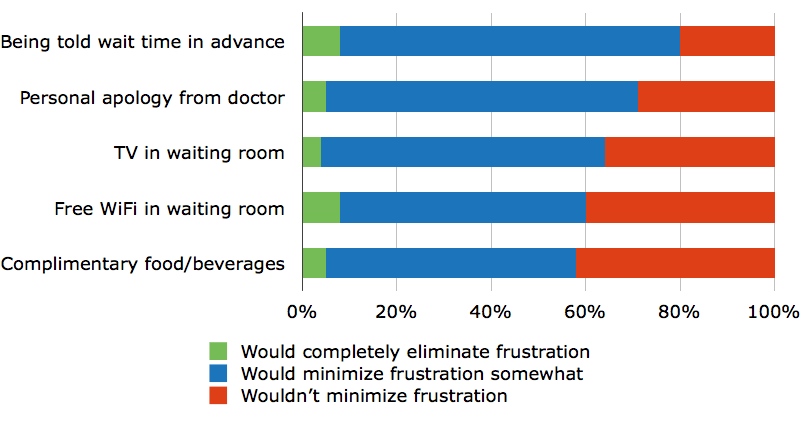
Be Consistent
Picture this: an allergy doc schedules a sinus MRI, then has to call the patient back to explain that the insurance company has denied the claim. The reason? The patient didn’t try an inhaled steroid first for 30 days. This plants the seeds of distrust in the patient’s mind. It’s better for doctor/patient trust if we have a procedure in place to check with the insurance company before scheduling. This not only boosts the trust level, it also saves on wasted time.
Spend More Time if Possible
We may not like it, but one certain way to build patient trust is spending more time with each patient. When a patient gets the sense that they’re a dollar sign to be rushed in and out as fast as possible, he’ll withdraw his faith in the physician. While more time may sound like it will lower your income, the increased trust and improved word of mouth will pay off in the long run.
Listen with Empathy
One of the best ways to build patient trust involves your ears. Listen more than you speak and work to truly understand the patient. This doesn’t have to take 20 minutes. It can be as simple as listening to a short patient spiel, then using empathy techniques like repeating back key points to make sure the speaker feels like she’s been heard.
According to an AP survey of 1,002 adults, most people value a doctor’s listening skills even over her ability to make an accurate diagnosis.
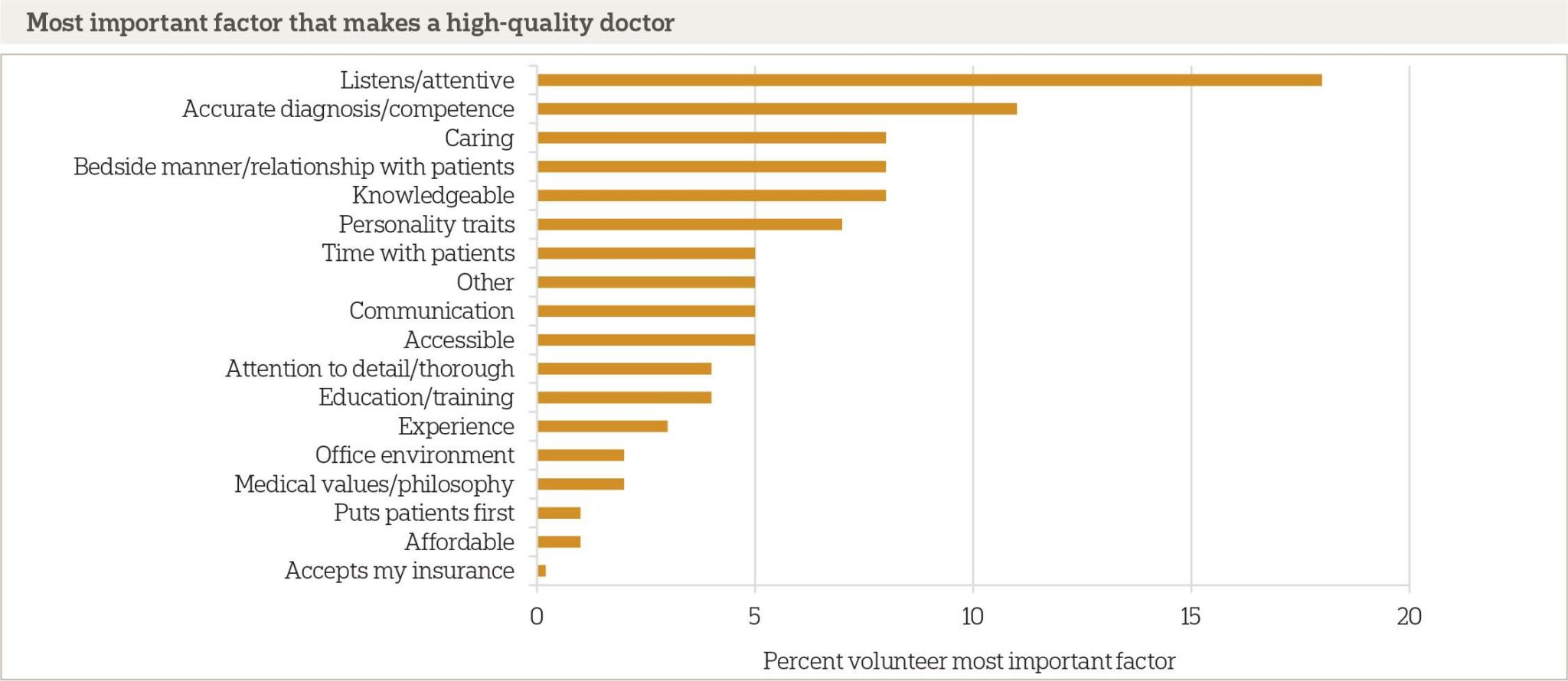
Follow the Golden Rule
All the patient trust tips above come down to something we all learned in kindergarten. The owner of one of the ten highest grossing Harley Davidson dealerships in the country put it this way: “Succeeding in business is simple. It comes down to treating your customers like you want to be treated.”
Be Honest to a Fault
Believe it or not, patients don’t want to hear that you can fix their problem. What they want is honesty. While, “We can cure you cheaply in two days” may make the patient feel good, if we can’t deliver it will shatter patient trust.
Integrity means referring the patient to another doctor when you can’t help. In the marketing guide book Sell with a Story by Paul Smith, a business manager tells a tale of trying to decide between two vendors. “The first guy answered every question I asked with, “Yeah, we can do that!” says the manager. “He thought his confidence was reassuring me. In fact, it was having the opposite effect. These weren’t the most common problems. If he thinks he already has all the answers, maybe he doesn’t really understand the questions.”
“The second guy was very different. He asked good questions, acknowledged how tough the problems were. And he said things like, “I’ve not seen that before. Let me see how we could fix it.” I could tell he was actually trying to solve the problem in his head instead of focusing on closing the sale.”
Find Out How Much You Can Save Instantly.
Try our on-line savings calculator.
To Get Trust, Give Trust
One of the cornerstones of building patient trust is to give a little of it out first. That means trusting your patients before expecting them to trust you. If a patient comes in talking about a Google search, don’t dismiss it even if it’s wrong. Instead, use it as a starting point to further educate the patient.
You’ll also need to give trust to your team members, so they can then extend it to the patients too. In concrete terms, grant autonomy to employees about how their process ought to work. Let them experiment and fail. Make sure they learn from their mistakes, but never chastise them. Above all, listen. If you trust your team members and patients, you will get trust in return.
Create a Vision, and a Brand
Once you’ve got all the steps above in place, you’ve got a brand that you can use to bolster patient trust. But don’t just put it on your website or on a page in your brochure. Make sure it permeates every facet of your practice. That means every time a patient interacts with you or your employees, they should feel that vision and that message, even if only through a fast, attentive visit and a frustration-free process.
Train Your Employees
It’s one thing to say we need to trust employees in order to build patient trust. It’s quite another to put it into practice. To make it easier to give trust, train all employees, not just in job skills and compliance, but in promoting your brand and vision to your patients.
Team members should be trained in policies and procedures that focus on making the patient’s visit (and pre/post visit interatction) as seamless and frustration-free as possible. Involve employees in creating and adjusting that process, and then re-train them regularly to keep them aligned with the practice’s goals.
Hone Your Emotional Intelligence
Part of employee training and physician training should center around emotional intelligence. In his book Emotional Intelligence, Daniel Goleman pointed out that emotional strength or EQ predicts success more accurately than IQ. Why would it be any different in your practice?
This comes down again to empathy, good listening skills, and treating patients how you’d want them to treat you if the situation were reversed. Since this is such a woefully overlooked skill, it’s not hard for a physician and his team to stand out in this regard. Since it’s teachable, a free or inexpensive online course for doctors and employees is a great way to buoy sagging patient trust.
Confront the Dreaded Google Beast
For many physicians, Google presents a major enemy to building patient trust. More and more patients come in self diagnosed. The standard defense used by many doctors of, “You can’t trust the internet,” just isn’t effective any more. For one thing, there are reputable resources online sharing medical information (MayoClinic.org, Harvard.edu, PubMed.gov) and savvy patients use and trust these sites implicitly. The doctor who dismisses Harvard or Berkeley is apt to wind up losing.
So, to build patient trust, don’t fight Google. To borrow some thinking from Ju-Jitsu, use your enemy’s energy to your advantage. If a patient comes in self-diagnosed with, say, exostosis, ask him how he knows. Acknowledge his skill and wisdom in getting that far. Then explain the steps to moving past the possibilities to certainties, as well as other potential diagnoses that should be checked as well.
According to Dr. Jane Orient from the Association of American Physicians and Surgeons (AAPS), “The first thing is to treat the patient with respect. You might actually learn something. There are very good things on Google along with the bad, and one thing your doctor can do is to help you evaluate that. But I think if the doctors take the attitude that they’re the experts and they know everything, then maybe they deserve to be mistrusted.”
Don’t Assume Every Patient is a Google Devotee
Though many patients do research their symptoms and conditions extensively online, many don’t. Sometimes the best way to build patient trust comes from knowing which is which.
If a patient doesn’t talk about his online research, it’s a good idea to keep things simple. Steer clear of complex medical jargon that can create a rift between you and the patient. It can even create feelings of anxiety. Bring that philosophy to your website also and keep your message simple and approachable.
Share Your Story with Your Customers
If you’ve read everything so far, you’ve got a solid handle on how to build trust with your patients. So share that story with them to enhance the process.
As marketing expert Paul Smith puts it, facts tell, stories sell.
“Storytelling almost magically builds trust, which is the foundation of good relationships,” says Smith. “A story provides a personal, intimate, and perhaps vulnerable glimpse into your world.”
One kind of story Smith recommends is a founding story.
“That can be as simple as a page on your website that helps the patient understand why you went into medicine in the first place,” says Smith, “So the patient can see the passion behind that decision and not just a selfish desire to make a lot of money.”
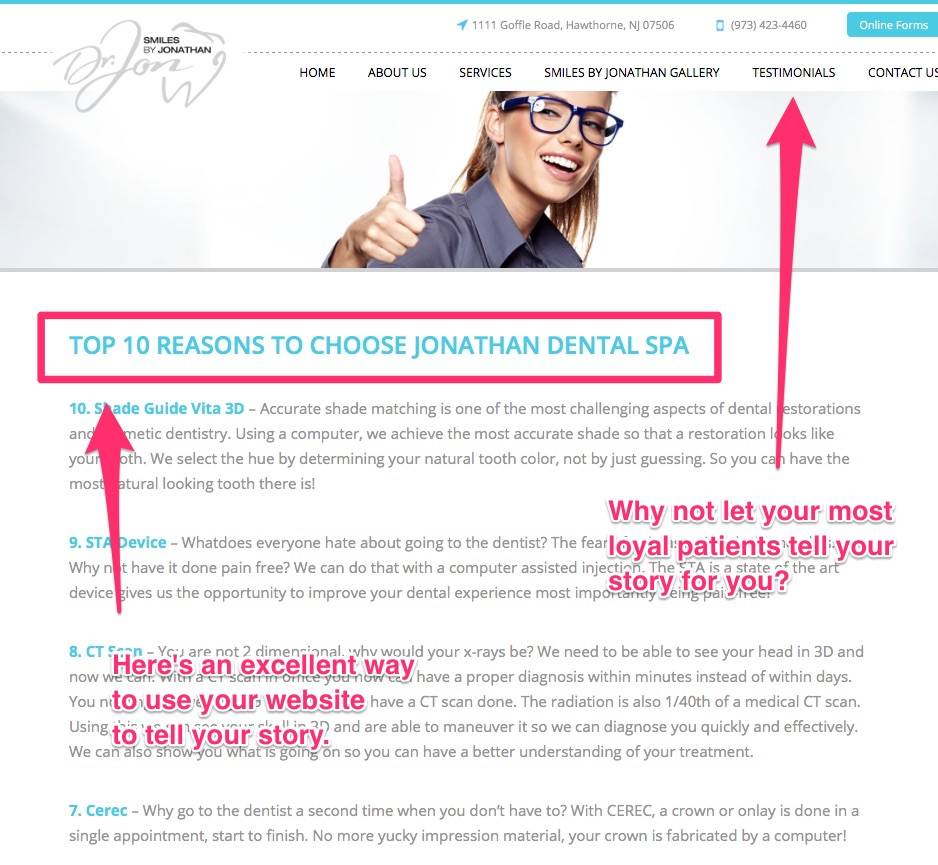
Don’t Treat Every Patient
This may seem counterintuitive, but to build patient trust with many, you’ll need to break it with a few. There’s a reason for the saying, “The squeaky wheel gets the grease.” Often it’s the most vocal and dissatisfied patients who get the most attention. Meanwhile, they’re sucking up the majority of your time and other resources, while the vast majority of loyal, already trusting patients get neglected.
As heartbreaking as it is, sometimes we need to cut a patient free.
“So when a patient always calls and breaks appointments,” says Dr. Abenaim, “or doesn’t pay their deductibles or out of pocket, and never listens to your recommendations, they’re robbing resources that could help your loyal customers.”
Consider Opting Out of Medicare
As Dr. Orient of AAPS points out, a lot of our deficit of patient trust comes from our system of third-party payment.
“The patient or his employer has paid a huge amount up front for a health plan that’s supposed to cover everything,” says Dr. Orient. “But the doctor is constrained by the plan’s decisions on what “everything” really means. He’s also constrained by price controls that make it impossible sometimes even to cover costs.”
This situation is why nearly 18,000 private practices to date have opted out of Medicare and insurance and returned to a cash-and-credit payment model. Contrary to what you’d expect, many of these doctors report making more money, working fewer hours, being happier, and spending a lot less time on paperwork and red tape.
Conclusion
Faced with a skeptical populace, a hostile regulatory environment, an incredibly litigious society, and a business world that eats private practices at an alarming rate, building patient trust is a survival skill.
Knowing how to create that trust starts with word of mouth, which comes from treating patients how you’d want them to treat you if the tables were turned. That means paying attention to the fine details like the time from entering the practice to being seen, removing billing hassles, and above all, listening.
Training team members in these key concepts is vital too. In the end, winning a patient’s faith and trust may be all that keeps a doctor’s practice afloat and independent.
How have you got your patients to trust you? We’d love to hear your story. Give us a shout in the comments section with a suggestion, anecdote, or question!


